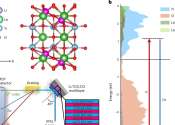Researchers create a tool for accurately simulating complex systems
Researchers often use simulations when designing new algorithms, since testing ideas in the real world can be both costly and risky. But since it's impossible to capture every detail of a complex system in a simulation, they ...
May 4, 2023
0
34









